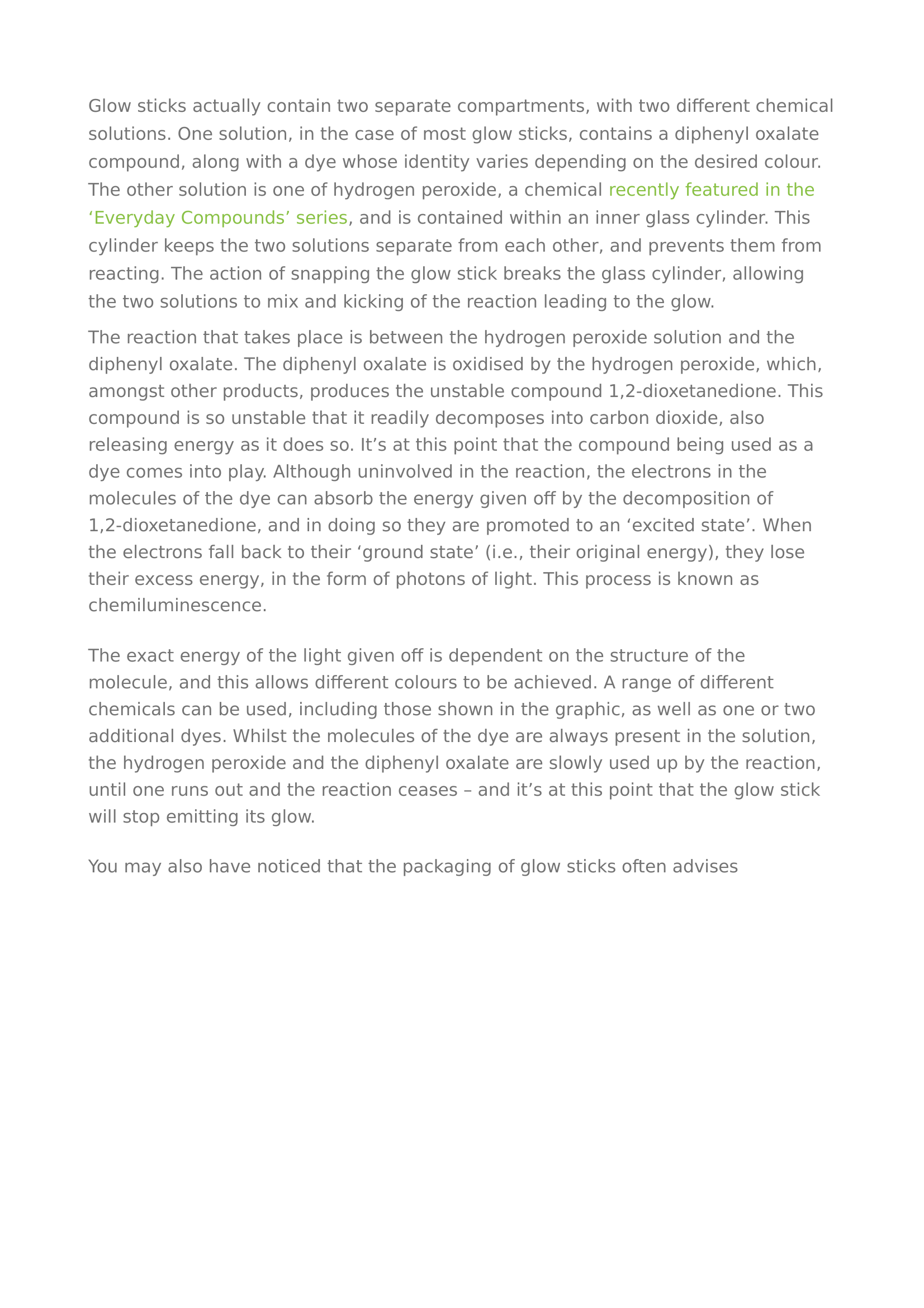baton lumineux
Publié le 02/01/2016

Extrait du document
«
Glow sticks actually contain two separate compartments, with two different chemical
solutions.
One solution, in the case of most glow sticks, contains a diphenyl oxalate
compound, along with a dye whose identity varies depending on the desired colour.
The other solution is one of hydrogen peroxide, a chemical recently featured in the
‘Everyday Compounds’ series , and is contained within an inner glass cylinder.
This
cylinder keeps the two solutions separate from each other, and prevents them from
reacting.
The action of snapping the glow stick breaks the glass cylinder, allowing
the two solutions to mix and kicking of the reaction leading to the glow.
The reaction that takes place is between the hydrogen peroxide solution and the
diphenyl oxalate.
The diphenyl oxalate is oxidised by the hydrogen peroxide, which,
amongst other products, produces the unstable compound 1,2-dioxetanedione.
This
compound is so unstable that it readily decomposes into carbon dioxide, also
releasing energy as it does so.
It’s at this point that the compound being used as a
dye comes into play.
Although uninvolved in the reaction, the electrons in the
molecules of the dye can absorb the energy given off by the decomposition of
1,2-dioxetanedione, and in doing so they are promoted to an ‘excited state’.
When
the electrons fall back to their ‘ground state’ (i.e., their original energy), they lose
their excess energy, in the form of photons of light.
This process is known as
chemiluminescence.
The exact energy of the light given off is dependent on the structure of the
molecule, and this allows different colours to be achieved.
A range of different
chemicals can be used, including those shown in the graphic, as well as one or two
additional dyes.
Whilst the molecules of the dye are always present in the solution,
the hydrogen peroxide and the diphenyl oxalate are slowly used up by the reaction,
until one runs out and the reaction ceases – and it’s at this point that the glow stick
will stop emitting its glow.
You may also have noticed that the packaging of glow sticks often advises.
»
↓↓↓ APERÇU DU DOCUMENT ↓↓↓
Liens utiles
- Sentier lumineux.
- Citations avec lumineux, adjectif.
- Roosevelt et la politique du gros baton
- photomètre photomètre, instrument servant à mesurer l'intensité (exprimée en candelas) et le flux (exprimé en lumens) d'un rayonnement lumineux.
- lumen lumen, unité du Système international d'unités de mesure du flux lumineux, qui traduit la quantité d'énergie rayonnante émise par une source lumineuse par unité de temps.


